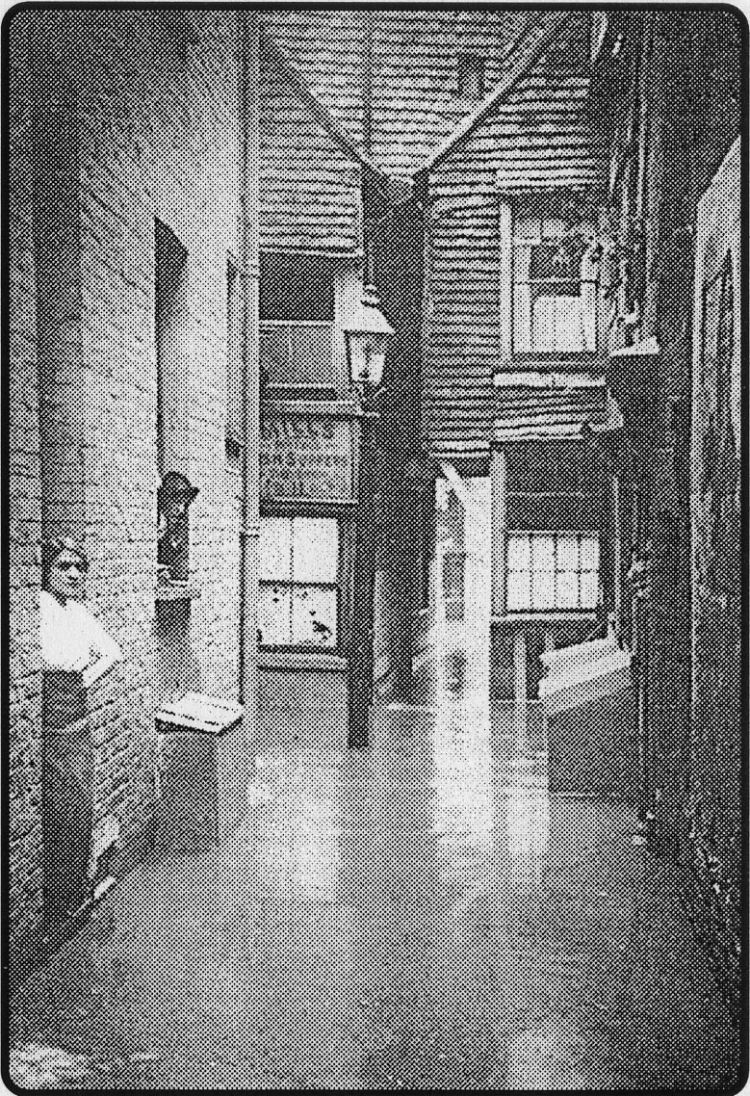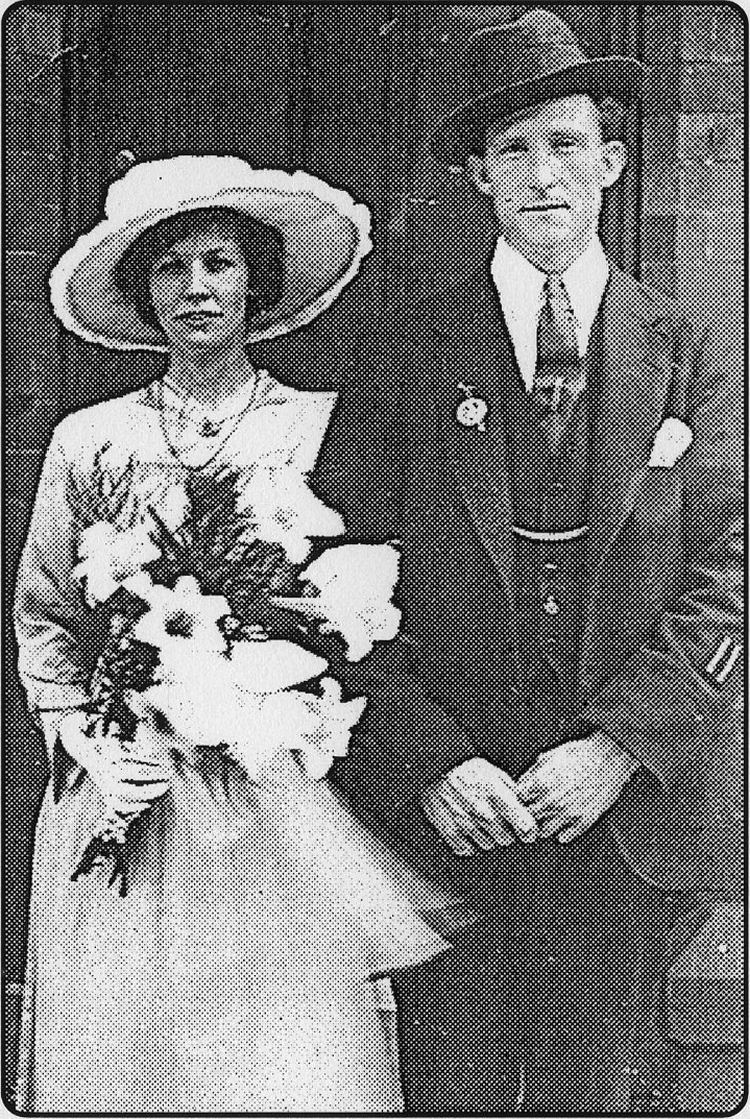
Published 6 December 2001
Note from Bob Derrick died late 2003


KEEN reader of Memories, Derrick Lawson, of Lynwood, Folkestone, now
retired, who used to work at Ashford railway works, has been telling me how
his uncle. Bill Scowen, of Folkestone, a First World War gas victim, was
forced to take a filthy job in the old Electricity Works boiler house, at
Cheriton.
Competent in electrical work by the age of 12, having studied it under his
father's supervision since a youngster - starting from the time he used to
carry his tools - he had applied for a job there after being invalided out
of the army.
He told the manager he had been gassed during the war, but all they could
offer him was work feeding the boilers — with all the fumes that went with
it!
The manager had no other openings and simply said "Do you want the job or
not?" And Bill Scowen took it, rather than go on the dole.
Bill's father George William Scowen had come to Kent from Camberwell to take
a job at the now defunct 'Electric Works,' at Morehall, as the family called
them, in 1911.
Fed up with the City he came to Folkestone in a quest for better pay, and
must have thought his luck was changing when he not only got an interview,
but a cheque to pay his railway fare down to Kent!
Derrick's grandfather decided it would be good experience for his son Bill -
Derrick's uncle - to travel down with him on the railway.
Bill had never travelled on a train in his life and must have been full of
excitement as, after kissing his mother goodbye, they caught a tram car to
Charing Cross Station to catch that train.
They were early and this gave Bill the opportu-
nity to experience railway refreshments for the first time. As his father
downed half a pint of beer, he had lemonade and a peek at the sandwiches his
mother had packed up for their journey.
Once aboard the train they found a 'Second Class' carriage seat but, says
Derrick, his uncle hardly left the window as a new world opened up to him.
As he looked out of the window he was entranced by things he had never seen
before -such as sheep and cows in the fields and beautiful greenery
everywhere. What a change from Camberwell, he thought.
On arrival at Shorncliffe Station - now Folkestone West - his father asked a
porter the way to the Electric Light Works and gave him a tip.
Company house
As they approached the works Bill Scowen pointed, puzzled, at what seemed to
him giant wooden towers. His father explained they housed the water supply
for the works.
After being asked a few questions George Scowen got a job and the family
eventually moved into a company house in December 1911.
Derrick says his uncle Bill had planned to follow his father into a job at
the same works but the First World War intervened and he was called up for
army service training at Chatham.
In late 1916 he was drafted to Ypres, in Belgium, serving with the Royal
Engineers but within days he had been gassed and was sent back to England.
With other wounded soldiers he was sent to a military hospital in Liverpool
and there he met his future wife, Frances Nubley, of Liverpool.
After six months he was sent home and dis-
Gas ordeal
GET that hat! A proud Bill Scowen with his bride Frances Nubley, from
Liverpool, who were married in 1920.
charged from the army, but he maintained a regular correspondence with
Frances and after the war she said she was coming down to Kent.
It was then that Bill took that job in the boiler house.
The family lived at No. 4 Electric Cottages - still there - which were
Electric Light Company houses for employees and their families.
Bill and Frances married in 1920 and were later given a house at No. 8
Station Road, Morehall.
Their daughter Joyce went on to carry out secret de-coding work during the
Second World
FLOODING: Jenny Pope’s Alley, connecting boozy Beach Street with Harbour
Street in the flash flood which hit Folkestone on October 8, 1913. On the
left is J. Mills’ fish restaurant. The photograph is one of the
illustrations in a Folkestone booklet by Martin Easdown and Linda Sage,
“Folkestone Under Water” which describes the devastation caused by five main
floods to hit town during the 20th Century. Published under the banner of
Folkestone & District Local History Society it costs £1.50 from the Public
Library, Tourist Information service or direct from Society secretary Peter
Bamford on 01303 223337.
War, at the legendary Bletchley Park intelligence centre, in Surrey,
recently featured on television.
Afterwards Joyce bought a house in Horn Street for her father, as her mother
had died.
Bill, who had eventually been able to take a different job at the
electricity works, in the stores — away from the coke oven fumes — lived at
the Horn Street house for a short time, but developed lung trouble and was
taken to Lenham Hospital where he later died.
Derrick's cousin Joyce died in the 1980s and the house was left to the local
church.
Stables infemowokeaun AA calls fnrsaffermetl
 |
Stables inferno woke gun party - but horses saved
‘I Oftl A SHOOTING party who were guests at Beechborough the conn try
house of Mr F.D. Brockman were roused from their sleep by an inferno
which destroyed the stables at tho roar. Fortunately the stable boy was
also woken by the fire and gave the alarm in timo to save the four
horses stabled there. Mr Brockman rode to Folkestone at speed by bicycle
to alort the fire brigade while men on norse-back were sent tc Sandgate
and Hythe to alert firemen there bul it was two hours after the stable
boy gave the alarm before firemen could begin fighting the blaze. In
late October the Herald told of a new bus service being run by John Cann,
with almost silent, neated buses, with interior lighting, from Cheriton
to Hytho, operating from a garage in Cheriton Rond. Manager o1 the
Herald printing works Mr F.J. Greatwooc received a thank-you gift from
his colleague: following the success of a three-day outing b\ the firm s
staff to Ostend. New sea defence; costing an estimated £15,000 were
demanded for New Romney and Littlestone.
|
AA calls for safer method of loading cars on steamers
«f QA/jTHE Automobile Association was press-J.2/4&0 ing for a better
method of craning cars aboard cross Channel ferries, referring to the
fears of damage with existing methods, which involved passing the loops
of slings through the car wheels. As the number of private cars
multiplied the problem of where shoppers could park also grew and Town
Council was being asked to restrict the number of cars and the period
they parked, in West Cliff Gardens, then a principally residential area.
Folkestone's latest nightspot. La Clique, in Dover Road, was set to
offer not only live music for the over 21 s but a separate room for
revellers enjoying their music at a quieter level over bistro type meals
and drinks. Most people relish a nice piece of flat fish and Dabs are
just one kind caught locally. Buck in 1926 one or two albi no specimens
were landed here. Years earlier one caught at Sandgatc was considered of
sufficient rarity for tho British Museum to preserve it in its Natural
History section at South Kensington and present a plaster facsimile to
the donor. Lvdd Council accepted an offer by Friends of Lydcl to restore
the town's ancient, manual fire engine.
|
£183,000 sea defences given Ministry go-ahead
iiQFii THE Ministry of Housing and Local •L99 J. Government approved a
£183,250 plan for coast protection work after axing part of the scheme
to save £25,000. The plan had been to extend steel piling in front of
Radnor Cliff, which would have had the effect of completing a continuous
'promenade' from the Marino Gardens through to Sandgate. The Ministry
did not think this necessary but advised that the situation should be
watched after groynes at that spot were repaired or rebuilt. Should
these not prove effective the Council could put forward steel piling
again. Interesting feature of the midweek paper, the Folkestone & Hythe
Gazette in 1951 was a regular series of cartoons of leading 'lights' of
local societies and, as Christmas neared, there was a fine set of
caricatures of the cast of the "Gondoliers," staged by the Folkestone
-Hythe Operatic and Dramatic Society at the Pleasure Gardens Theatre
(now, sadly, demolished.) The cartoonist, signing himself simply Mac,
was Capt G.D. Machin D.F.C. evidently a talented artist. The Folkestone
Fur & Feather Society was another hobby group to be similarly featured.
|
Shepway Council calls for a better 'slice of the cake’
ft Ckm7d. LOCAL shoppers are taking far too big a J.«//Oslice of the
commercial cake to Canterbury - and leaving Shcpway with the crumbs.
That was the message from Shepway District Council 25 years ago when it
called for a check in the building of new shops in the cathedral City
and more growth at Folkestone town centre to balance things up a little.
The Shepway Council set out plans to give Folkestone the "kiss of life"
and sent them to the County Council, which had asked for its comments on
the Kent Structure Plan. Folkestone's strategy called for more industry,
with a bid to attract more firms to the area which had links to the
Continent, small light industry on Romney Marsh, improved transport
links, including a better A20 link from Folkestone harbour and an
improved bus service for rural areas. It also called for more new land
allocated for housing estates to attract younger working people to the
area. Top traders, hoteliers, tourist operators, councillors and trade
unionists met at the Civic Centre and called for a series of public
meetings throughout Shepway to discuss the overall situation in the
area, after estate agents warned that the town was dying on its feet. |
|



